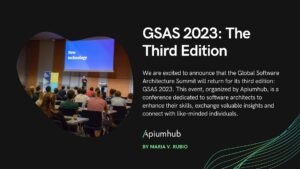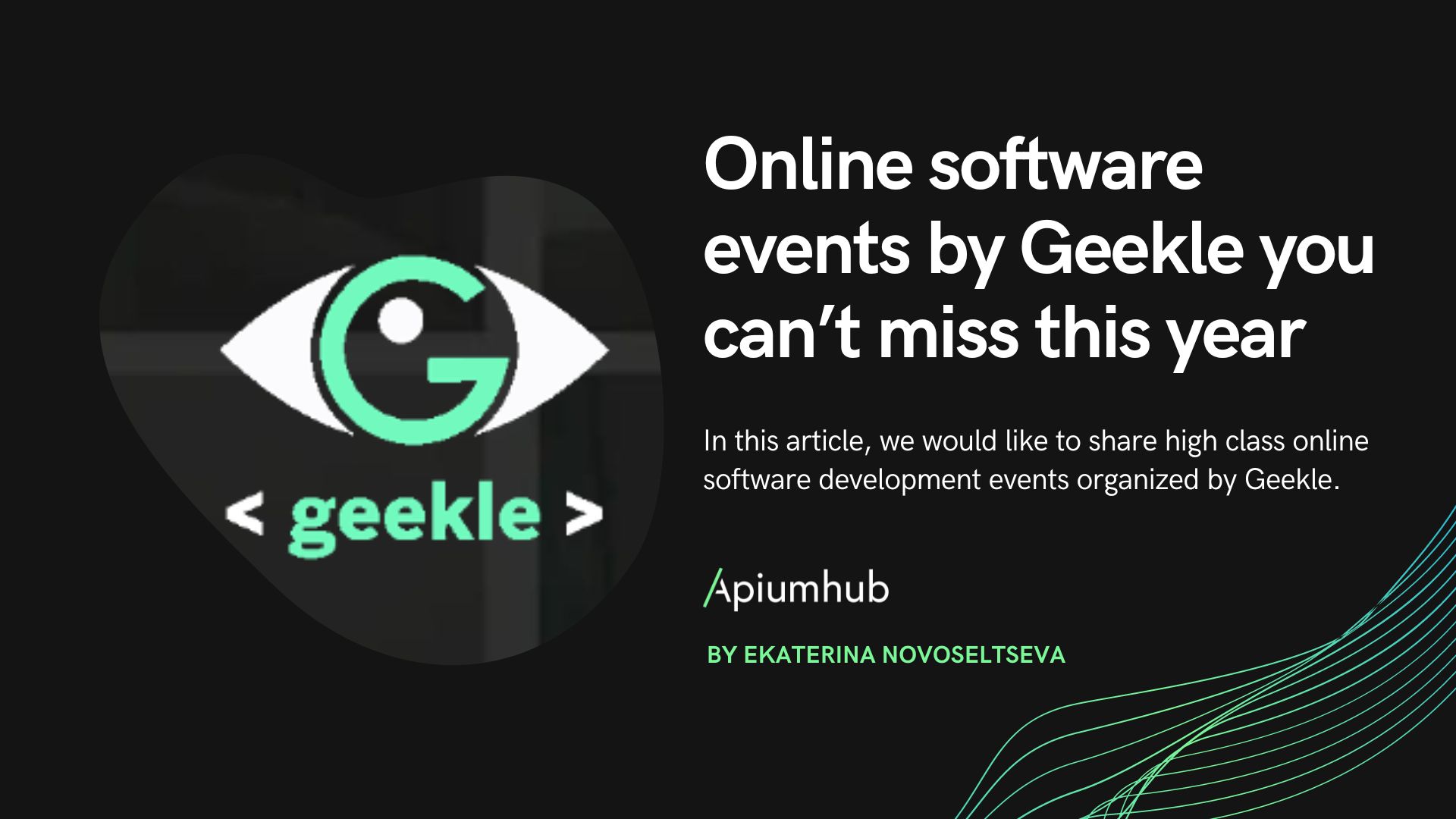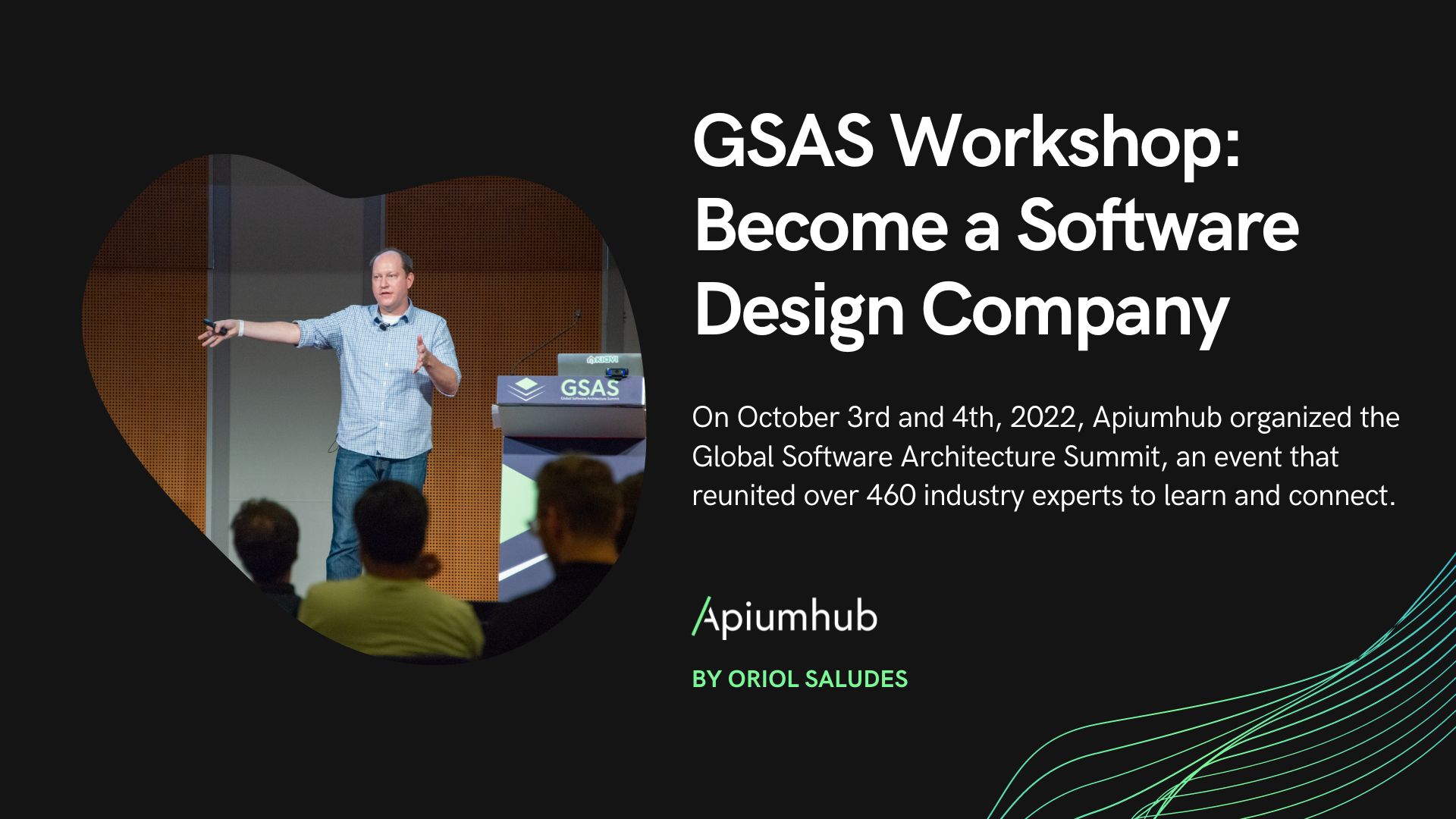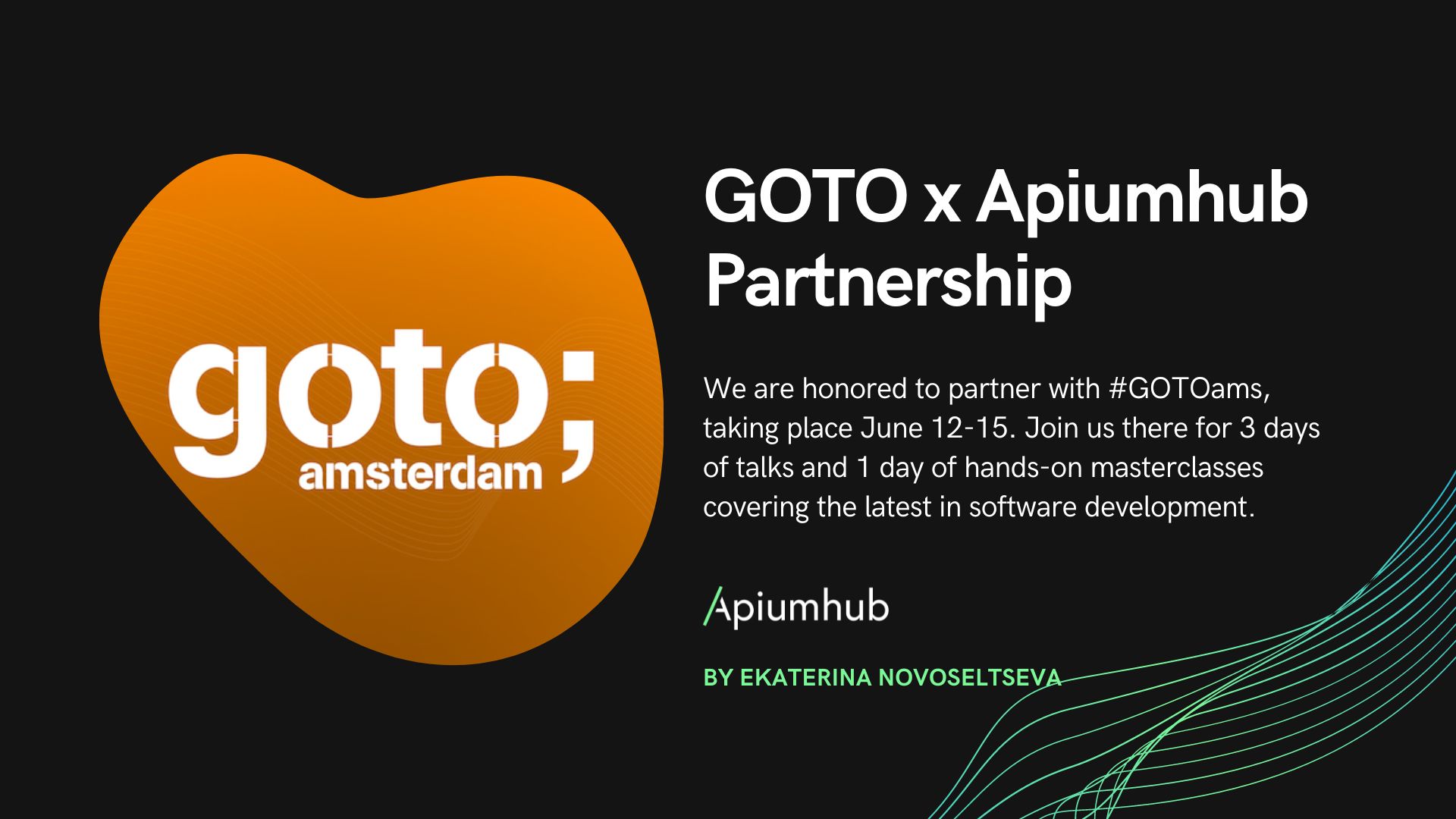Table of Contents
I was invited to ESERP business school this autumn to give classes about the role of technology in the luxury industry. As many of you already know, I am passionate about both things: technology and the luxury industry, therefore for me it is always a pleasure to share with students what we have learnt at Apiumhub about this topic. If you are interested in the topic I had last year, you can read an article about it here.
In Apiumhub, we work with luxury brands and I must admit that necessities of the companies change year by year, and innovation has become the key focus in this industry. If you are active on linkedin, you probably noticed that during the last year, major luxury brands opened numerous positions related to innovation like: innovation director, digital innovation director, digital transformation and many others.
TECHNOLOGY IN THE LUXURY INDUSTRY: BRIDGING OFFLINE & ONLINE WORLDS
The digital revolution has changed the luxury business landscape significantly, transforming the ways in which brands reach out to consumers and how consumers interact with brands. The internet has changed the buying habits and brands must respond to the challenge.
This creates a serious problem for retailers, as the landscape is changing so quickly that it becomes extremely hard to keep up. There are countless examples of companies that have all disappeared because they failed to recognize and react to changing technology in the luxury industry. In 2016, speed, agility and efficiency are key to success. To become agile & efficient and become faster than competitors, luxury retailers should invest in an electronic inventory control system, a central database, a point of sales system, an automated statistical forecasting system and emerging technologies like: virtual reality, augmented reality, push notifications, instant messaging, IoT, smart watches, etc. Brands should use technology in the luxury industry and not only online, but bring technology in store as well to stay competitive.
According to the research of Pwc, 80% customers who are likely to visit a store, are likely to visit it if there is any kind of entertainment like for example VR and AR technology. And 79% are more likely to visit stores that offer interactive experiences that help customize products.
Unfortunately by now, due to ignorance, fear or conservative thinking, luxury brands have generally been slower to move. That means that still luxury brands have enormous opportunities to fight for the leader’s place putting technology and innovation in the priority mode.
Innovative strategies, products and communications have great ability to foster loyalty, build brand value and increase sales & engagement with the brand. Innovation drives interest and attention of the clients, attracting them to the store or to a digital channel. It provides retailers with an edge in five major shopper-need categories: convenience, choice or assortment, shopability, price-value, and brand equity.
The success of ventures such as Net-A-Porter and the success of brands like Burberry, Dior, Ray Ban, etc. has shown that consumers are indeed willing to buy luxury products online, and at full prices. Now it’s a matter of creating digital experiences, drive emotions and build this bridge between online and offline worlds.
I really like the phrase of Steve Jobs: “Brands must give consumers what they want, before they know they want it”. This is so true, we follow others, we are influenced by others. And here brands should take the initiative to think about what their clients may need to simplify their lives. And technology in the luxury industry is key in this question.
You might have already seen that one of the biggest millennial trends that will keep un growing in 2017 is the drive for experience based spending. And I am not talking about companies that provide experience-based services, I am talking about all companies, all companies can add a special experience to their customers. While the customer is choosing a product or while he is buying it or maybe even a post purchase experience. This really depends on the brand, but what is really important here is that an experience must be provided, sooner or later during the customer journey, they should be impressed by what you provide. Most of the times it happens due to technology, which helps them find the right cloths using advanced recommendations system or personalization tools, etc.
It may seem ridiculous, but 40% of luxury brands are not available online. These brands clearly put everything on brick-and-mortar stores, but they are missing out a big share of online sales. It is clearly seen that customer priorities are shifting towards mobile and and e-commerce. The number of fashion tech startups are growing, numerous events appear dedicated to technology in the luxury industry or technology in fashion. Marketing directors start becoming aware of this necessity to go digital, but they have a lack of experience and knowledge in this field, therefore the process is slow. Maybe you also noticed that now luxury brands open their own digital innovation labs or they buy tech startups, which help them with their digital transformation and innovation. This industry has a real potential to grow in terms of technology and brands shouldn’t miss this opportunity.
Let’s look at some of the most popular technologies luxury brands start implementing in their online and offline worlds:
EXAMPLES OF TECHNOLOGY IN THE LUXURY INDUSTRY
-
Push notifications, geofencing & beacon examples
Downloading the app is the first step of establishing connections between the company and its customers, but it’s not enough, you need to create engagement. Push notification allows your app to notify your users about new messages or events even when they are not actively using the app. You have the possibility to do the segmentation and send targeted messages based on the history of the purchase, preferences, location, etc. to the people who may find your offer useful.
As for the geo-based push notification, it enables the app to automatically send relevant pieces of information based on the current location of the customer. It is mostly use to tell clients that the store is nearby.
A lot of luxury brands use push notification, geofencing and beacons. They don’t stop the efforts once they brought the customer to the store, they keep on influencing the customer’s decision while in the store. For example beacons, (combined with a dedicated mobile app) these small passive-communication devices, allow for precise customers’ tracking and understanding of their shopping behaviors. Beacons are a massive data driven marketing tool because they deliver metrics as demographic data, personal interests, average checkout value, etc. Customers get a detailed product description plus individual style guidance while staying in front of the shelf. And here is the true beauty and power of Beacons, they bring benefits not only for marketers, but also for clients.
-
Augmented reality examples
Today, you can see a lot of brands that make it possible to scan a printed add and that redirects you to the section of the web where the advertised product is. It connects printed marketing materials with technology.
Augmented reality is heavily used in fashion and beauty industry. For example, LVMH’s Sephora offers through technology a nice option, it allows users to try on different lip sticks using a mobile app. When a specific item is selected, it appears on the users lips and a bar across the top of the app will display the product information such as the product name, brand and price. Technology uses facial recognition software to allow users to test products and purchase directly in the app.
As for Tissot, it enabled shoppers to try on their luxury watches virtually via Selfridges and Harrods windows in London, creating a great experience and PR for the brand.
MyBoucheron allows consumers to try on pieces from the luxurious French retailer Boucheron collection from the comfort of their own home. A proof of success? The experience generated a 50% increase in their web traffic.
-
Big data examples
Now marketers have loads of data and they don’t know how to use it efficiently, how to analyze it and how to pick the right one. Now marketers invest a lot in tools and companies, which help them to work with their data.
-
Artificial intelligence examples
Currently, fashion brands and retailers don’t have advanced tools to predict what products to order and when to discount or replenish them according to the market trends and customer needs. If brands predict wrong, the result is a loss of income, at the end you can be left with a lot of stock that is not in demand and run out of stock of popular items. Artificial Intelligence can help a luxury retailer on how to align product drops to match demand, and even how to display products in a store to sell as many as possible.
Robot hotel staff and virtual bank assistants have moved from science fiction to marketing fact. Hospitality is one of the sectors thinking more boldly about the opportunities of AI. Luxury hotel portfolio Dorchester Collection is using it to identify what guests want, not what marketers think they want. To enhance its customer experience, it is using the AI Metis platform, which allows it to eschew the standardised hospitality industry measurement techniques such as mystery shoppers and customer satisfaction surveys and, instead, tap directly into digital customer feedback. Metis reads thousands of customer reviews and tells the marketers what really matters to their customers. Metis speaks almost all languages and summarises key findings, puts the findings in context with competitors and tells marketers results and strategies worth listening to.
Another example of using AI technology in the luxury industry is Connie robot by the hotel brand Hilton. Hilton has made AI a key part of the customer’s experience in the Hilton McLean in the USA. In partnership with IBM, Hilton is using Connie, a robot concierge, to cater to guests’ needs for information about the hotel and the surrounding area. Connie gives consumers quick access to personalised information through cognitive reasoning and robotics. Hilton argues that Connie enhances the customer experience. Examples of interactions guests have with the robot include business travelers asking Connie for directions to their conference room or a family asking when the restaurant closes.
As for the online shopping, it becomes a conversation where the shopper describes the dress of their dreams, and, in seconds, an AI-powered search engine tracks down the closest match.
-
Virtual reality examples
Virtual reality leads to a better store experience. Christian Dior incorporated virtual reality glasses with the aim of giving their customers an extra incentive to visit their stores. Dior developed Dior Eyes which allowed viewers to explore behind the scenes at their ready-to-wear fashion shows.
These sort of experiences make people talk and come back, it delivers experience and today, that’s what matters.
Leveraging its in-store experience to drive online sales, Ralph Lauren also implemented VR but in another way, Ralph Lauren installed the Oak Fitting room at its Polo flagship on New York’s Fifth Avenue. When a consumer enters the room with the RFID-enabled merchandise, sensors detect what products the customer is trying on. The customer can change the lighting and the language, request different colors and sizes or save the session for later by entering a mobile phone number. The shopper can then buy the chosen items online via a provided link.
Watch the Ralph Lauren video about how to use technology in the luxury industry successfully here.
Also, what is possible with Virtual Reality is to save time on queues and changing the cloths. Virtual reality mirrors can record one’s measurements and display clothing items on a virtual version of a client, an experience that offers “convenience for shoppers and data for retailer”.
Watch another video on how to use technology in the luxury industry here.
Another very interesting option to use VR is to use it as virtual stores which customers can visit from their own home. Basically, customers can sit in their living room, put on a virtual reality headset and feel like they are walking into a luxury fashion store on Manhattan’s Fifth Avenue. Customers can browse all the clothing and accessories, just as they would be in a real bricks-and-mortar store. Everything is three-dimensional and interactive, so customers can move around the virtual store freely. And what is really great is that if you found an item that you really like, you can buy it straight away.
-
Drones examples
The ability of drones to capture insane cinematic perspectives is something that creative directors of the brands really love, no more helicopters, everything became much easier.
For example, Fendi uses drones to film fashion show live-stream and take photos, actually it has been the most significant application for drones so far.
-
Instant messaging examples
Innovative luxury retail companies take advantage of the elements IM offers to their customers – instant, simple and direct communication. For example, Zalando introduced instant messages to allow users to get in touch with their stylists directly via their phones, free of charge. Aside from styling tips, clients of Zalando can also get advice on where to find and buy specific Zalando products.
-
IoT examples
Now brands come up with a security and authentication system to simplify the life of their customers. Now, instead of having a locker and keys, you could close and open your bag with your mobile app, using your fingerprint. It is secure and no need to carry different lockers and remember the passwords for each one of them.
I always enjoy classes with ESERP students, and it makes me happy that they enjoy it too. They have showed their interest in the role of technology in the luxury industry. We didn’t only study theory, but we applied it into practice. I was impressed with the level of creativity and innovation skills students have. If they implement their ideas into a reality, very soon we will have really cool services in the luxury industry, of course using latest technologies. Probably next time I will give classes will be in April and to be honest I can’t wait to do it again! Fresh minds generate fresh ideas. They made me think about some awesome things I want to implement in some of the projects we are working on!
Don’t forget to subscribe to our monthly newsletter to receive latest technology news and trends!
If you found this article interesting, you might like…
- 3 Examples of Inspiring Innovation in Fashion Tech
- Top business blogs to read
- Human-centered innovation
- Barcelona makes it to the top 5 of innovation hubs
- Top smart city projects to watch
- Blockchain technology: use cases, statistics, benefits, startups & events
- Barcelona; one of the best smart cities in Europe
- Disruptive innovation to track
- The era of unicorns
- Top 20 promising startups in Barcelona
- IOT projects that may change the world
- Virtual reality technology
Author
-
Ekaterina Novoseltseva is an experienced CMO and Board Director. Professor in prestigious Business Schools in Barcelona. Teaching about digital business design. Right now Ekaterina is a CMO at Apiumhub - software development hub based in Barcelona and organiser of Global Software Architecture Summit. Ekaterina is proud of having done software projects for companies like Tous, Inditex, Mango, Etnia, Adidas and many others. Ekaterina was taking active part in the Apiumhub office opening in Paseo de Gracia and in helping companies like Bitpanda open their tech hubs in Barcelona.
View all posts











